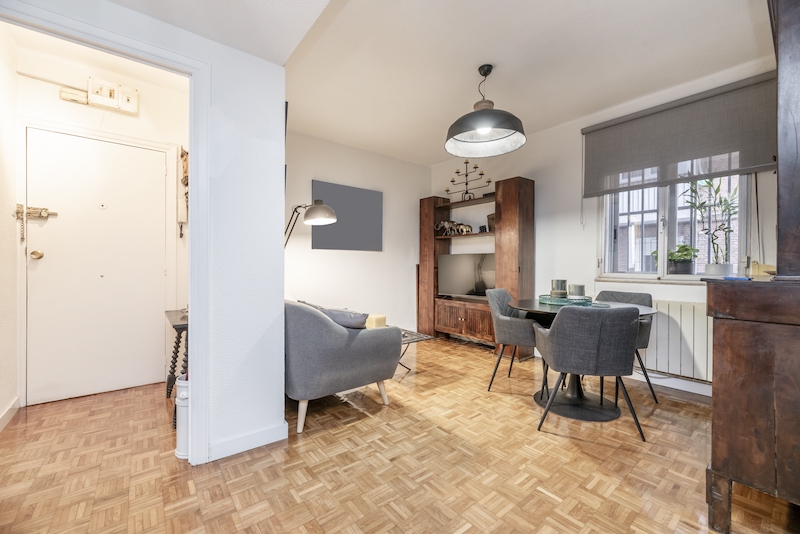Purchasing the cheapest home in a desirable neighborhood can be a strategic investment, offering both affordability and potential appreciation. This approach allows buyers to enter competitive markets, but it often comes with challenges such as awkward layouts, limited natural light, or less desirable views. Studio apartments, in particular, present a unique opportunity in high-demand areas but require thoughtful planning and strategic improvements to maximize long-term gains.
Highlights:
•Affordable entry into high-demand markets: Buying the cheapest home in a desirable neighborhood allows you to enter competitive real estate markets at a lower cost.
•Potential for significant appreciation: Even smaller or less ideal homes in high-demand areas tend to appreciate over time, offering strong long-term returns.
•Access to walkability and top schools: Some affordable homes are located in neighborhoods with high Walk Scores and highly rated schools, providing a balance between affordability and desirable amenities .
•Challenges with size and layout: These homes often come with compromises, such as smaller size, awkward layouts, or lack of natural light, but strategic renovations can add significant value.
•Renovation opportunities: Affordable properties may need updates, but smart renovations can enhance their appeal and increase resale value.
•Neighborhood impact on property value: Even the cheapest homes can benefit from the overall appreciation of a desirable neighborhood, but it’s crucial to select areas with a mix of home prices.
Why You Should Consider Buying the Cheapest Home
Many people believe that buying an affordable home in a desirable city neighborhood requires sacrificing walkability and access to high-quality schools. Fortunately, that isn’t always the case. Research shows that neighborhoods with a balanced mix of home prices are three times more likely to be walkable and have highly rated schools than neighborhoods that are purely affordable. For example, Van Nest in the Bronx boasts a Walk Score of 90 and offers convenient access to public transit and nearby schools, making it an attractive area despite the mixed home prices. Van Nest is one of the most walkable neighborhoods in New York City, allowing residents to perform daily errands without a car.
When choosing to buy in these mixed-price neighborhoods, you can often secure an affordable property while benefiting from the same amenities and appreciation as higher-priced homes nearby. This strategy positions buyers for long-term success, as these neighborhoods tend to hold or increase their value over time.
Why Consider Studio Apartments?
Studio apartments are often among the most affordable properties in desirable neighborhoods. Due to their smaller size, studios are typically priced lower than one-bedroom or larger homes, allowing investors to enter competitive markets at a lower cost. Studios are especially appealing in cities where space is at a premium, such as New York or San Francisco . They offer an ideal solution for single occupants or renters who prioritize location over square footage.
Pros of Buying the Cheapest Home
1.Affordability: Purchasing a lower-priced home, especially a studio apartment, allows you to enter high-demand markets at a lower cost. This can also free up budget for potential improvements that could increase the property’s value over time.
2.Potential for Appreciation: Neighborhoods with a mix of home prices tend to appreciate well over time. Even smaller homes, like studios, can benefit from the overall market appreciation seen in desirable areas.
3.Access to Amenities and Schools: Some affordable homes, including studio apartments, are located in neighborhoods with high walkability and access to top-rated schools.
Cons of Buying the Cheapest Home
1.Smaller Size and Layout: Studios and other affordable homes often come with compromises on space. Studios, in particular, may lack defined living areas and are typically smaller in size, which can make them less attractive to some buyers. Additionally, awkward layouts, such as long entryways or limited kitchen space, can further reduce the appeal.
2.Lack of Natural Light and Poor Views: Many cheaper properties, especially ground-floor or interior-facing units, may suffer from a lack of natural light or unappealing views. For studio apartments, this can exacerbate the feeling of living in a confined space.
3.Renovation Costs: While buying a cheaper home offers affordability, it often requires renovation. Studio apartments may need updates to enhance their appeal, such as improved storage solutions, brighter lighting, and reconfiguring the layout to maximize space efficiency.
Overcoming the Challenges
1.Strategic Renovations: Studios often benefit from creative storage solutions, multifunctional furniture, and open shelving to maximize limited space. Consider removing unnecessary walls or partitions to create a more open feel. Bright paint, updated lighting fixtures, and modern finishes can also significantly enhance the value of a studio.
2.Maximizing Light: For studio apartments or ground-floor units with limited light, using bright colors, mirrors, and high-quality artificial lighting can make the space feel more inviting. Large windows or skylights, when possible, can also increase the amount of natural light.
3.Highlighting Location and Amenities: Emphasize the benefits of the home’s location when marketing it. Buyers are often willing to overlook size limitations for access to great amenities like public transportation, restaurants, and highly rated schools.
Conclusion
Investing in the cheapest home in a desirable neighborhood, whether it’s a studio apartment or another type of small property, can be a wise strategy. These homes offer affordability, access to top-notch amenities, and the potential for significant appreciation. While smaller size and awkward layouts present challenges, strategic renovations and marketing can turn even modest properties into highly desirable investments. By emphasizing location, improving space efficiency, and maximizing light, you can make a small property a big win in a competitive market.
Sources:
Why You Should Never Buy the Best House in the Neighborhood
When Buying Cheap Real Estate Is A Good Idea (And When It’s Not)
Buying The Best House In The Neighborhood: Pros and Cons
Why You Should Buy the Cheapest Home on the Best Block
Where to Live in New York City (Locals Rank the 15 Best Neighborhoods)


